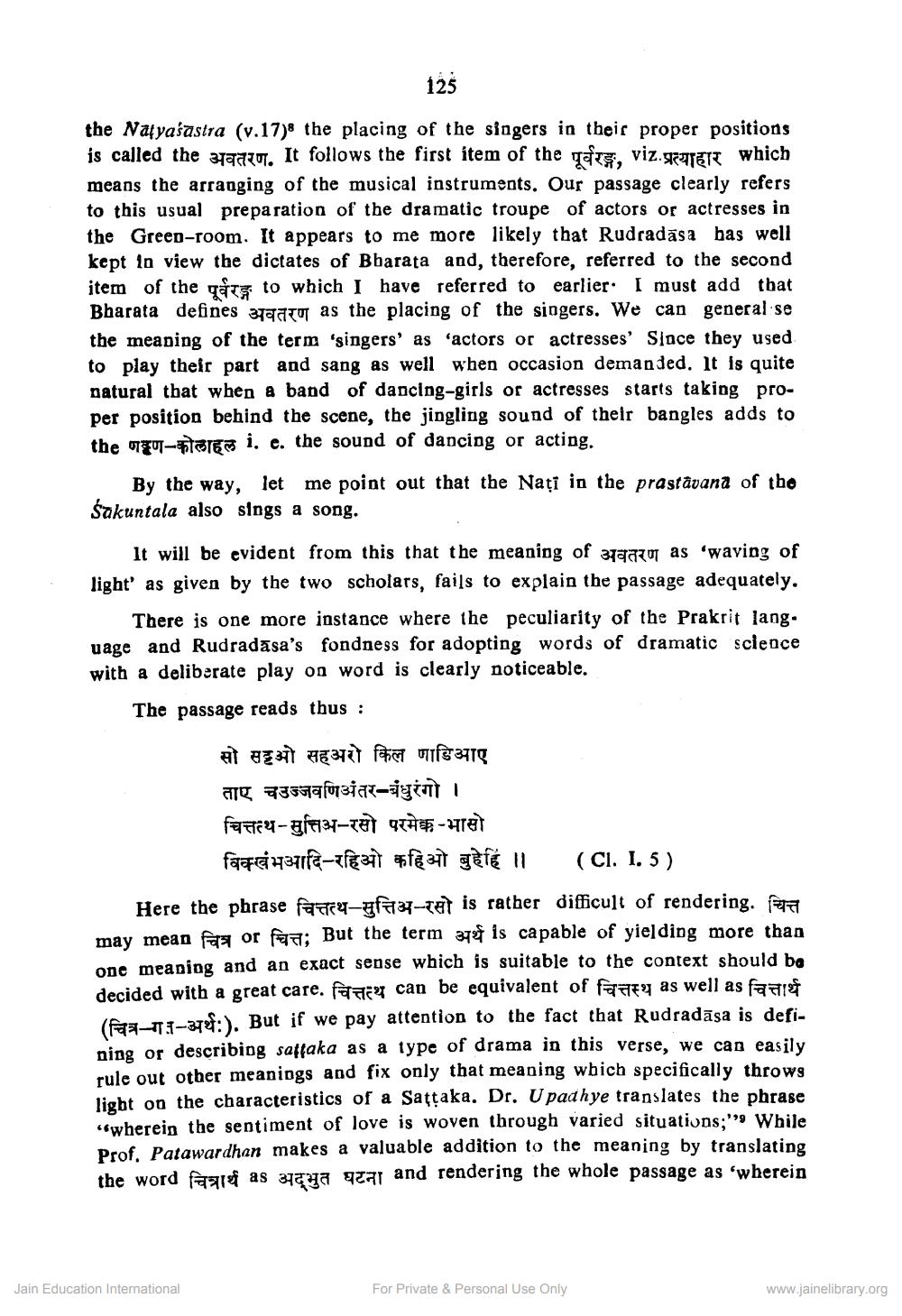________________
125
the Nafyasastra (v.17)8 the placing of the singers in their proper positions is called the अवतरण. It follows the first item of the पूर्वरङ्ग, viz.प्रत्याहार which means the arranging of the musical instruments. Our passage clearly refers to this usual preparation of the dramatic troupe of actors or actresses in the Green-room. It appears to me more likely that Rudradāsa bas well kept in view the dictates of Bharata and, therefore, referred to the second item of the tits to which I have referred to earlier. I must add that Bharata defines saatu as the placing of the singers. We can general se the meaning of the term 'singers' as factors or actresses' Since they used to play their part and sang as well when occasion demanded. It is quite natural that when a band of dancing-girls or actresses starts taking proper position behind the scene, the jingling sound of their bangles adds to the 70-ak i, e. the sound of dancing or acting.
By the way, let me point out that the Nați in the prastāvana of the Śakuntala also sings a song.
It will be evident from this that the meaning of saatu as 'waving of light' as given by the two scholars, fails to explain the passage adequately.
There is one more instance where the peculiarity of the Prakrit lang. uage and Rudradāsa's fondness for adopting words of dramatic science with a deliberate play on word is clearly noticeable.
The passage reads thus :
सो सट्टओ सहअरो किल णाडिआए ताए चउज्जवणिअंतर-बंधुरंगो । चित्तत्थ-सुत्तिअ-रसो परमेक्क-भासो
faci4911fa-1f247 #feet gele 11 (CI. I. 5) Here the phrase चित्तत्थ-सुत्तिअ-रसो is rather difficult of rendering. चित्त may mean fee or fan; But the term 37 is capable of yielding more than one meaning and an exact sense which is suitable to the context should be decided with a great care. It can be equivalent of any as well as fait (fax-171-37ef:). But if we pay attention to the fact that Rudradāsa is defining or describing saffaka as a type of drama in this verse, we can easily rule out other meanings and fix only that meaning which specifically throws light on the characteristics of a Sattaka. Dr. Upadhye translates the phrase "wherein the sentiment of love is woven through varied situations;'9 While Prof. Patawardhan makes a valuable addition to the meaning by translating the word far as 3ya gear and rendering the whole passage as 'wherein
Jain Education International
For Private & Personal Use Only
www.jainelibrary.org




